Notes: Darcy Lever station was situated on the Lancashire & Yorkshire Railways (LYR) Liverpool, Bolton and Bury line. The line had been promoted by east Lancashire industrialists as the Liverpool & Bury Railway (L&BR). They wanted better access to the port of Liverpool so that they could bring in raw materials and export their goods more effectively. The L&B was authorised on 31 July 1845 and work began shortly after. The L&B became part of the LYR on 9 July 1847 before the first section of the line was opened. The section of line on which Darcy Lever was located (between Bolton and Bury Knowsley Street) was opened on 20 November 1848. On 1 May 1848 a line had opened between Bury and the LYR Manchester and Leeds railway at Castleton which provided a through route to Rochdale.
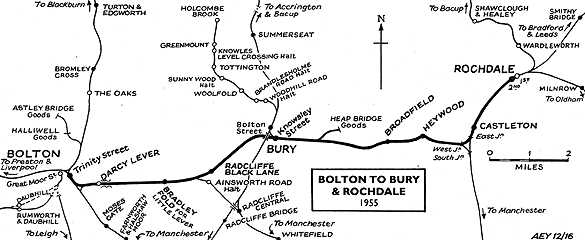 |
Darcy Lever station opened with the line on 20 November 1848. It was located on the west side of Lower Darcy Street over which the line passed on a bridge. The line was double track and the station was provided with two platforms. Both platforms were connected to Lower Darcy Street by steps and sloping pathways.
The main facilities were originally located on the up platform (Bury direction) as shown on a 6-inch scale map from 1850. There were no goods facilities at Darcy Lever owing to its proximity to Bolton where the LYR had a large goods station. Half a mile to the west of the station was Rose Hill Junction where the line split into a north and a south spur to make a connection with the Manchester and Bolton line (opened 29 May 1833).
To the east of the station ran the River Tonge in a steep valley over which the line was carried on the Darcy Lever viaduct, 612ft long and 86ft high. The viaduct had five stone columns which supported timber lattice spans. They were later replaced with steel lattice spans.
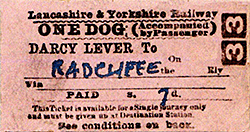 At the time of opening Darcy Lever was served by three trains in each direction on Monday-to-Sunday. Up trains ran to Bury and to Rochdale. Down services ran to Liverpool. At the time of opening Darcy Lever was served by three trains in each direction on Monday-to-Sunday. Up trains ran to Bury and to Rochdale. Down services ran to Liverpool.
By the 1870s a further building had been added on the down platform (Bolton direction). It was a modest single-storey structure, possibly of timber, under a hipped roof.
On the up platform there was a single-storey building of similar size and shape to that on the down platform.
In 1872 a signal box was opened on the up platform. It was located to the east of the up platform building. The box was a Saxby & Farmer Type 6 but the frame size is unknown.
From 1 December 1879 Darcy Lever started to be served by passenger trains that ran between Bolton and Manchester Victoria via Radcliffe and Prestwich. The LYR had opened a line between Manchester Victoria and Bradley Fold via Prestwich and Radcliffe. This new service provided passengers at Darcy Lever with more direct and faster trains to Manchester.
By the 1890s the station had gained a footbridge located west of the station buildings.
The December 1895 timetable showed 24 up and 23 down services on Monday-to-Friday. On Saturdays there were 23 up and 25 down services as seen in the table below. Darcy Lever also had a good level of service on Sundays.
Up Trains – December 1895 |
Destination |
Down Trains – December 1895 |
Destination |
5.34am |
Rochdale |
5.38am |
Bolton Trinity Street |
6.44am |
Rochdale |
6.51am |
Bolton Trinity Street |
7.57am |
Manchester Victoria |
8.03am |
Wigan Wallgate |
8.21am |
Rochdale |
8.36am |
Bolton Trinity Street |
8.55am |
Bacup |
8.48am |
Bolton Trinity Street |
9.35am |
Manchester Victoria |
9.38am |
Bolton Trinity Street |
10.39am |
Rochdale |
9.51am |
Bolton Trinity Street |
11.16am |
Manchester Victoria |
10.47am |
Wigan Wallgate |
12.11pm |
Radcliffe |
11.46am |
Bolton Trinity Street |
12.39pm |
Rochdale |
12.55pm |
Bolton Trinity Street |
1.49pm |
Manchester Victoria |
1.22pm (Saturdays Only) |
Bolton Trinity Street |
2.23pm |
Rochdale |
1.39pm (Saturdays Excepted) |
Bolton Trinity Street |
2.57pm |
Manchester Victoria |
2.01pm (Saturdays Only) |
Bolton Trinity Street |
4.01pm |
Manchester Victoria |
2.21pm |
Bolton Trinity Street |
4.09pm |
Rochdale |
2.35pm (Saturdays Only) |
Bolton Trinity Street |
5.04pm (Saturdays Excepted) |
Radcliffe |
3.56pm |
Bolton Trinity Street |
5.20pm |
Rochdale |
4.51pm |
Bolton Trinity Street |
5.57pm |
Manchester Victoria |
5.20pm |
Bolton Trinity Street |
6.19pm (Saturdays Excepted) |
Radcliffe |
5.58pm |
Bolton Trinity Street |
7.03pm |
Rochdale |
6.02pm |
Bolton Trinity Street |
7.49pm |
Radcliffe |
6.28pm |
Bolton Trinity Street |
8.59pm |
Rochdale |
7.02pm |
Bolton Trinity Street |
9.39pm |
Rochdale |
8.28pm |
Bolton Trinity Street |
9.59pm |
Manchester Victoria |
8.47pm |
Bolton Trinity Street |
10.49pm (Saturdays Only) |
Rochdale |
9.07pm |
Bolton Trinity Street |
|
|
10.42pm |
Bolton Trinity Street |
On 13 May 1903 the station signal box was proposed for closure and this took place by 1908. The box was replaced with a lever frame.
Bolton Corporation Tramways started to operate an electric tram service to Darcy Lever from 6 May 1910. The tram terminus was a short distance to the north of the station on Hag End Brow. A frequent service to Bolton adversely affected Darcy Lever station as many passengers found the tram services to be more convenient.
From February 1916 the direct services to Manchester Victoria ceased and in their place a rail-motor service was introduced between Bolton Trinity Street and Radcliffe. The alteration was brought about following electrification of the Bury Bolton Street to Manchester Victoria via Radcliffe and Prestwich route. A high frequency service of electric trains was operated on that line giving Darcy Lever passengers who wanted to travel via that route the option of a quick change of trains at Radcliffe.
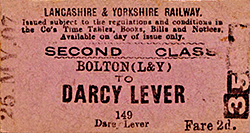 The lever frame on the up platform had been removed by 1919. The lever frame on the up platform had been removed by 1919.
On 1 January 1922 Darcy Lever became part of the London & North Western Railway (LNWR). The July 1922 timetable showed 27 up and 29 down services on Monday-to-Friday. On Saturdays there were 26 up and 30 down services. Fifteen of the services each way were the Bolton and Radcliffe shuttle. A much reduced service ran on Sundays.
A further change of ownership came on 1 January 1923 when the LNWR merged with other companies to become the London Midland & Scottish Railway (LMS).
During the 1930s the LMS stopped running the rail-motor on the Radcliffe services replacing it with conventional locomotives and coaches.
The LMS timetable for the summer of 1947 showed 19 trains each way on Monday-to-Friday. On Saturday there were 19 up and 16 down services. No trains called at Darcy Lever on Sunday. Ten of the Monday-to-Friday up services went to Radcliffe Central (Central being added on 11 December 1933) and 10 of the down services originated there.
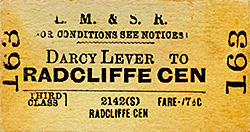 On 1 January 1948 Darcy Lever became part of British Railways (BR) London Midland Region (LMR). The BR(LMR) timetable for summer 1949 showed a similar level of service to that of the LMS during its last year. On 1 January 1948 Darcy Lever became part of British Railways (BR) London Midland Region (LMR). The BR(LMR) timetable for summer 1949 showed a similar level of service to that of the LMS during its last year.
Since 1910 Darcy Lever had been well served by trams and after 11 March 1928 by buses. This had reduced the station’s profitability and for this reason it was closed by BR(LMR) on 29 October 1951, soon to be demolished.
The line continued to be used by passenger services until Saturday 3 October 1970 after which it was closed completely. The track was lifted shortly after.
Tickets from Michael Stewart, route map by Alan Young. Signal box information
from Tony Graham.
Sources:
- A Regional History of the Railways of Great Britain - Volume 10 The North West - Geoffrey O Holt, David & Charles 1986.
- Forgotten Railways - North West England - John Marshall, David & Charles 1981.
- Lost Stations of North West England - Paul Wright, Silverlink Publishing 2011.
- The Lancashire & Rorkshire Railway, Volume 1 - John Marshall, David & Charles 1969.
- The Lancashire & Yorkshire Railway Volume 2 - John Marshall, David & Charles 1970.
Click here to see the other stations between Bolton and Castleton:
Bradley Fold, Radcliffe Black Lane,
Bury Knowsley Street, Heap Bridge Goods, Broadfield,
Heywood (2nd) and Heywood (1st)
See also: Ainsworth Road Halt and Radcliffe |

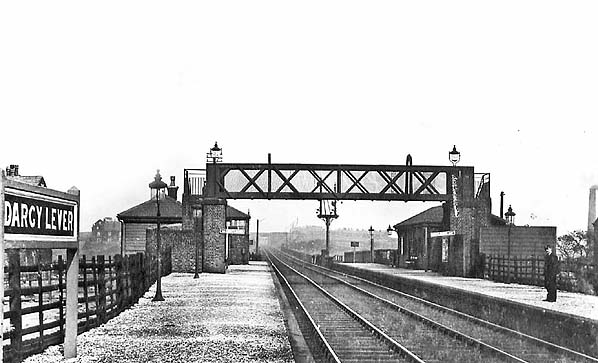
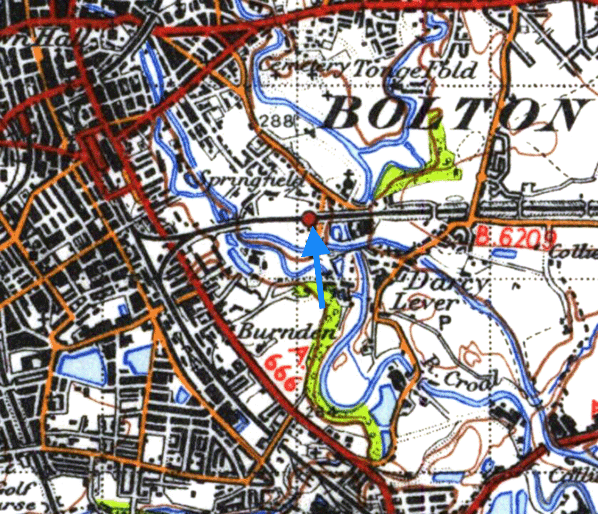
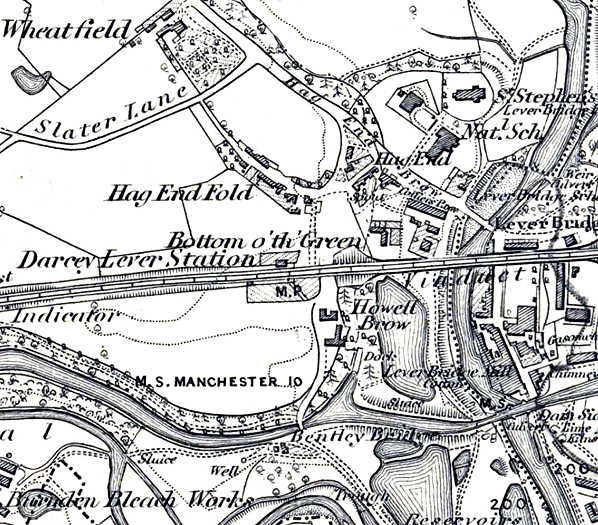
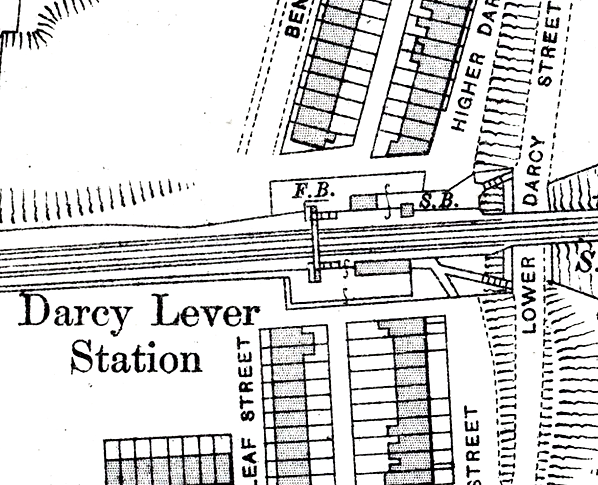
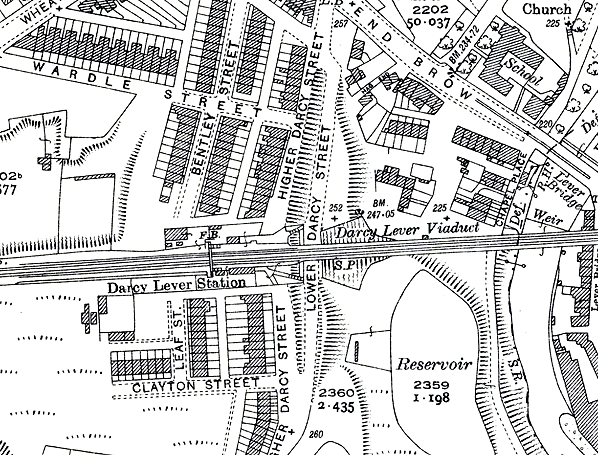
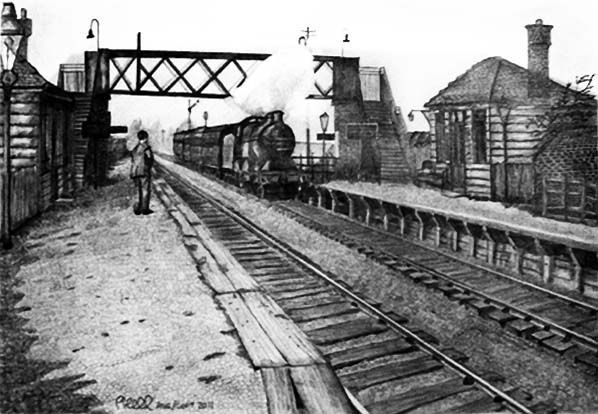
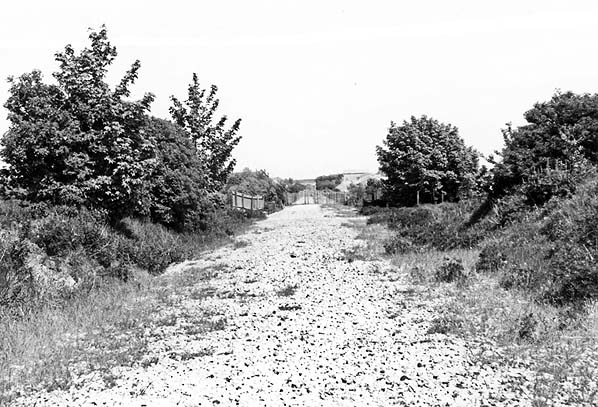
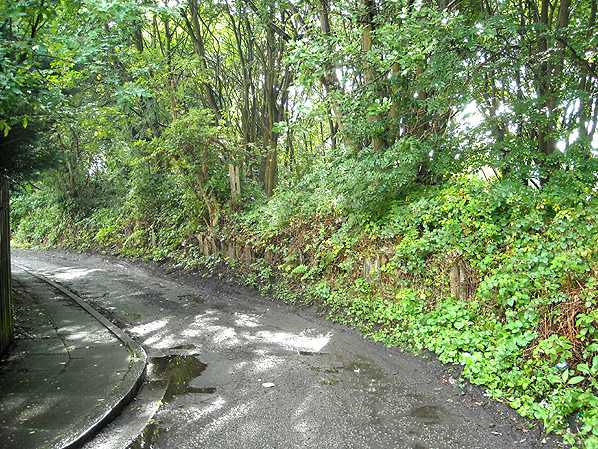
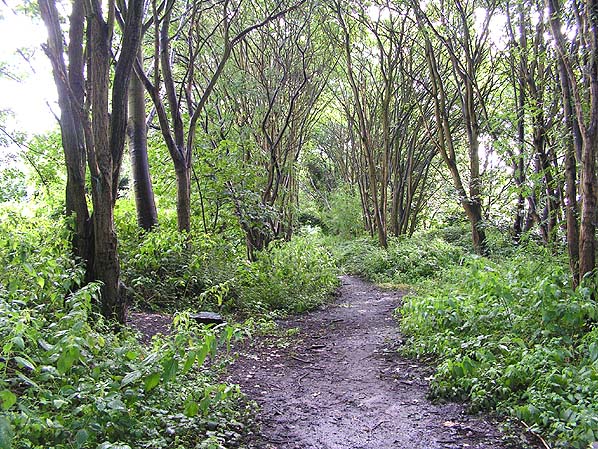

 At the time of opening Darcy Lever was served by three trains in each direction on Monday-to-Sunday. Up trains ran to Bury and to Rochdale. Down services ran to Liverpool.
At the time of opening Darcy Lever was served by three trains in each direction on Monday-to-Sunday. Up trains ran to Bury and to Rochdale. Down services ran to Liverpool.  The lever frame on the up platform had been removed by 1919.
The lever frame on the up platform had been removed by 1919.  On 1 January 1948 Darcy Lever became part of British Railways (BR) London Midland Region (LMR). The BR(LMR) timetable for summer 1949 showed a similar level of service to that of the LMS during its last year.
On 1 January 1948 Darcy Lever became part of British Railways (BR) London Midland Region (LMR). The BR(LMR) timetable for summer 1949 showed a similar level of service to that of the LMS during its last year. 
 Home Page
Home Page